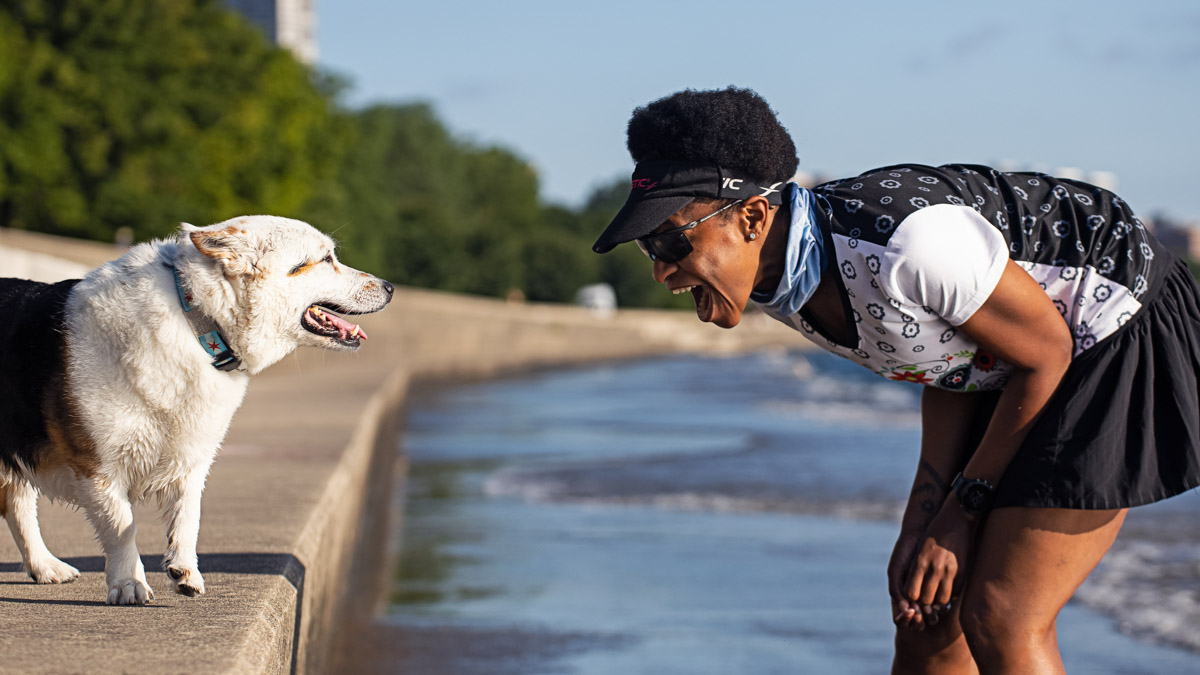Finding dependable running partners for your athletes can be a challenge, so why not suggest they run with a loyal and eager partner, their dog? Not so fast; before suggesting your athletes leash up and head out, here are some guidelines.
Does your dog like to run?
Your athletes mustn’t assume their dog is a runner. We all know people who dislike running—that may be their dog as well. Perhaps they have very short legs, or they have compact breathing passages. Ease into the running and see how eager they are to run. If the dog is a puppy, be sure the growth plates seal before your athlete starts logging long miles. They should always consult the vet about the proper ramp-up based on the dog’s size and age. Generally speaking, smaller dogs can ramp up quicker than large dogs.
It’s important to gradually build up; if their dog has not done any running, think of them as an “off the couch” runner. Athletes should start incorporating short runs, 1000m at a time during walks, and see how they adjust. Next, they should build to a few miles every other day, adding each week to ensure they can handle the running. At first, this may feel frustrating to your training athlete as they will likely have to dial down the intensity until their dog matches their pace and distance. However, remind them that once their four-legged friend is up for the task, training with their dog will bring greater joy to each workout—after all, dogs experience exercise-induced endorphins just as humans do.
Dog Running Skills
To leash or not to leash? In order to keep the vast majority of ambient trail users happy, Fido will need to be leashed most of the time. It’s incredibly helpful for athletes to implement consistent leash training with their pet. This will reduce the likelihood of sudden bursts of energy or pulling that could, in a worst-case scenario, lead to an injury or muscle strain. A pulling dog will affect the athlete’s form and put stress on the dog’s neck and breathing. Ideally, the dog should comfortably trot alongside the athlete with a slack lead. In order to really dial in the running setup, suggest that your athletes try a well-fitted harness, waist leash with some shock absorption and a small treat bag affixed to their waistband for training continuity purposes.
Nature Calls
Like human runners, dogs feel the need to ‘drop weight’ early in the run. Running with dogs necessitates more patience than running solo, so advise athletes to give their dog a few minutes to take care of bodily functions and settle into the movement before hammering out an interval. Once everyone’s bodies are regulated and warm, then both parties will be much more comfortable upping the pace.
That being said, as we all know poop can happen at nearly any point mid-workout. Athletes should never leave for a run without a poop bag. If they aren’t already, it’s extremely helpful to run with a trail vest—that way it’s easy to quickly stash a used poop bag (ideally in it’s own compartment). This will give athletes the peace of mind that they are never ‘that person’, leaving a full poop bag along the side of a trail, likely to be forgotten.
Paw Protection
It’s essential to remember that humans are privileged to run in shoes, while pups are forced to be minimalists in the footwear department! Athletes should be mindful of hot pavement, sharp rocks, and snow. Snow packed in a dog’s paws can cause pain and lingering irritation. Trails, dirt, and soft surfaces are better for both humans and our dogs. If need be, trail booties provide great year-round paw protection.
Athletes should stay vigilant about checking their paws; they may need to build up calluses before more extended runs.
Water Breaks & Wagging Tails
When your athlete fills up their hydration pack, they need to remember their dog needs fluids as well. It’s important to carry a collapsible bowl or, better yet, teach them how to drink out of a bottle or bite valve and share water. Dogs generally do not need calories on runs under an hour and a half. They will however need fluids when it is hot, or the workout goes over an hour.
Be Safe & Have Fun!
Athletes should remember that not all run workouts are right for their four-legged friend. For example, ultra-distance training or training on really hot days can be really dangerous for their pup. It’s best to always consult with a vet before making any questionable decisions for their pet’s health.
That being said, there are few training sessions more enjoyable than when you can get sweaty outside with a super happy good boy or girl right next to you.



